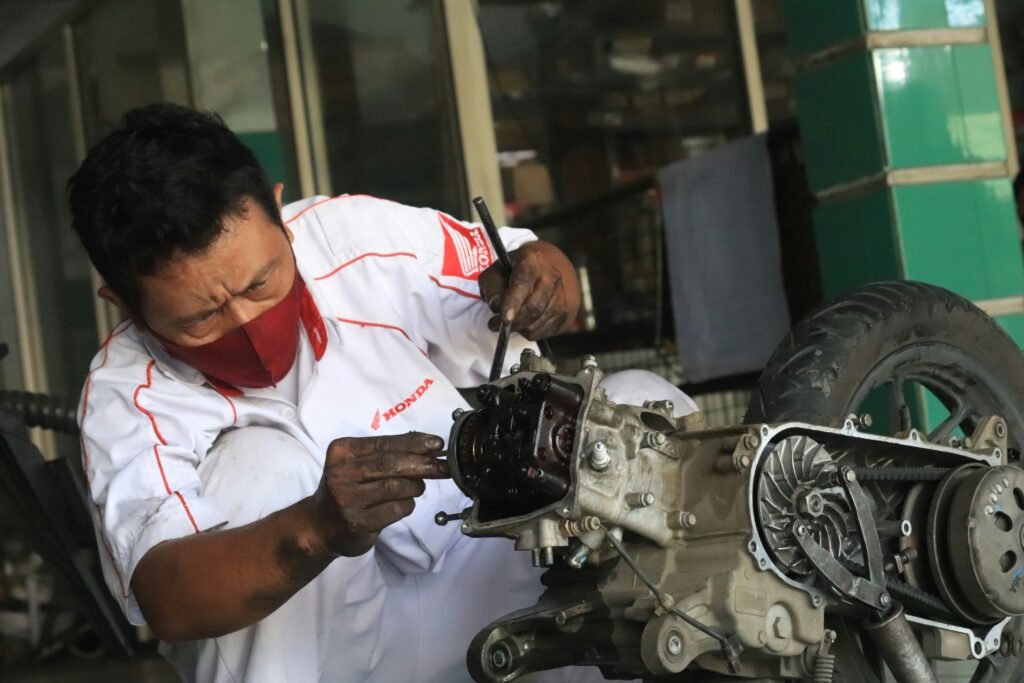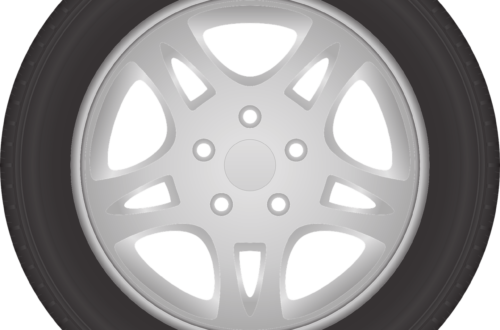If you’re tired of constantly replacing your tires and want to save some money in the long run, then this article is for you. Discover effective tips and tricks on how to prevent tire wear and tear, ensuring that your tires last longer and perform better on the road. From regular tire rotations to proper inflation and alignment, you’ll learn simple yet crucial maintenance practices that can significantly extend the lifespan of your tires. Say goodbye to frequent trips to the tire shop and hello to smoother, safer rides!

This image is property of images.unsplash.com.
Choosing the right tires
When it comes to choosing the right tires for your vehicle, there are several factors to consider. One of the first things to think about is the type of driving that you do. If you primarily drive on smooth highways and city streets, all-season tires may be the best option for you. On the other hand, if you frequently drive off-road or in severe weather conditions, you may need specialized tires such as winter tires or all-terrain tires.
In addition to considering the type of driving you do, it’s also important to choose the appropriate tire size for your vehicle. This information can usually be found in your vehicle’s owner’s manual or on the inside of the driver’s side door. Using the wrong tire size can negatively impact your vehicle’s performance and safety, so it’s crucial to get this right.
Another aspect to consider when choosing tires is the tread pattern. Different tread patterns are designed to provide optimal traction for specific driving conditions. For example, tires with deep grooves and aggressive tread patterns are ideal for off-road driving, while tires with shallower grooves and less aggressive tread patterns are better suited for regular road use. Consider the type of terrain and weather conditions you typically encounter to ensure you choose the right tread pattern for your needs.
Lastly, investing in quality tires is essential for maintaining the safety and performance of your vehicle. High-quality tires may be more expensive upfront, but they tend to offer better traction, handling, and durability. They can also provide a smoother and quieter ride. Remember, your tires are the only point of contact between your vehicle and the road, so it’s worth investing in the best ones you can afford.
Maintaining proper tire pressure
Proper tire pressure is crucial for both your safety and the longevity of your tires. It’s important to regularly check your tire pressure to ensure it is at the recommended level. Underinflated tires can negatively impact your vehicle’s handling, fuel efficiency, and tire wear. On the other hand, overinflated tires can lead to reduced traction and an uncomfortable ride.
To determine the correct tire pressure, refer to your vehicle’s manual or the tire placard located on the inside of the driver’s side door or inside the glove box. These resources will provide you with the manufacturer’s recommended tire pressure for your specific vehicle. Remember that tire pressure can vary depending on the type of tires you have, so it’s essential to use the correct values.
It’s also important to consider temperature fluctuations when it comes to tire pressure. As the ambient temperature changes, so does the air pressure inside your tires. For every 10 degrees Fahrenheit change in temperature, your tire pressure can fluctuate by about 1 psi (pound per square inch). Therefore, it’s a good practice to regularly check your tire pressure, especially during extreme weather conditions.
When checking your tire pressure, it’s best to do so when the tires are cold. This means that the vehicle has been parked for at least a few hours and hasn’t been driven for more than a mile. The reason for this is that driving heats up the tires, causing the air inside to expand, which can give a false reading of tire pressure. By measuring the pressure when the tires are cold, you’ll ensure a more accurate reading.
Rotating tires regularly
Rotating your tires on a regular basis is an essential part of tire maintenance. The purpose of tire rotation is to ensure even wear on all four tires, as different positions on the vehicle can cause tires to wear at different rates. By rotating your tires, you’ll extend their lifespan and improve overall traction and performance.
It’s important to understand the importance of tire rotation to motivate you to make it a regular part of your tire maintenance routine. When tires wear unevenly, it can lead to decreased handling, reduced fuel efficiency, and a shorter tire lifespan. By rotating your tires, you’ll distribute the wear more evenly, allowing them to last longer and perform better.
To rotate your tires properly, it’s recommended to follow the specific rotation pattern recommended by the manufacturer. This pattern takes into account factors such as tire wear patterns, tire type, and drivetrain type (front-wheel drive, rear-wheel drive, or all-wheel drive). Following the recommended rotation pattern will ensure the best results and prevent any unnecessary complications.
As a general rule of thumb, it’s advisable to rotate your tires every 5,000 to 8,000 miles. However, it’s always a good idea to consult your vehicle’s manual for the manufacturer’s specific recommendation. Additionally, when replacing tires, consider having them rotated at the same time to promote even wear across all tires.
Balancing tires
Tire balancing is another important aspect of tire maintenance that often goes unnoticed. The purpose of balancing tires is to evenly distribute the weight of the tire and wheel assembly. When a tire is not balanced correctly, it can result in vibrations, irregular tire wear, and less-than-ideal vehicle handling.
To ensure that your tires are well-balanced, it’s best to have them balanced during the tire rotation process. This way, you’re killing two birds with one stone by addressing both tire rotation and balancing at the same time. By combining these maintenance tasks, you’ll save time and effort while keeping your tires in optimal condition.
In addition to balancing during rotation, it’s important to balance your tires when you notice any signs of imbalance. These signs may include vibrations felt through the steering wheel or seats, uneven wear patterns on the tires, or irregular handling. If you experience any of these symptoms, it’s best to have your tires balanced as soon as possible to prevent further damage or safety concerns.
Balancing tires should be done using a professional tire balancing service. They have the necessary equipment and expertise to accurately balance your tires, ensuring that they spin evenly and smoothly. Attempting to balance tires yourself without the proper equipment can lead to inaccurate results and potentially cause more harm than good.

This image is property of images.unsplash.com.
Maintaining proper wheel alignment
Proper wheel alignment is vital for both the safety and performance of your vehicle. Wheel misalignment occurs when the angles of the wheels deviate from the manufacturer’s specifications. This misalignment can negatively impact your vehicle’s handling, fuel efficiency, and tire wear.
Understanding the impact of misalignment is essential in realizing why regular alignment checks are necessary. When your wheels are misaligned, they can cause your vehicle to pull to one side, which can be both uncomfortable and unsafe. Misalignment can also lead to uneven tire wear, reducing the lifespan of your tires and requiring more frequent replacements.
It’s recommended to have your wheel alignment checked regularly, ideally during routine maintenance visits or when you notice any handling issues. Most vehicle manufacturers recommend checking alignment every year or every 12,000 to 15,000 miles, whichever comes first. However, if you frequently drive on rough roads or encounter potholes, it may be necessary to check alignment more frequently.
When experiencing handling issues such as pulling to one side, drifting, or vibrations, it’s a good indication that your wheel alignment may be off. These symptoms should not be ignored, as they can lead to further damage to your tires and vehicle components. Consult with a professional alignment service to have your alignment diagnosed and adjusted as needed.
To get professional alignment adjustments, it’s important to visit a reputable auto shop that has the necessary equipment and skilled technicians. Attempting to adjust wheel alignment without the proper tools and knowledge can result in inaccurate alignment and potential damage to your vehicle. Trusting a professional will ensure that your alignment is corrected to the manufacturer’s specifications, promoting optimal safety and performance.
Avoiding overloading and underinflating
Overloading your vehicle and driving with underinflated tires are two common mistakes that can lead to tire wear and tear. To prevent unnecessary damage to your tires, it’s essential to understand the weight limits and proper tire inflation for your specific vehicle.
Knowing the weight limits of your tires is crucial to avoid overloading. Each tire has a maximum load rating, which is the amount of weight it can safely carry. Exceeding this weight limit puts excessive strain on the tires, causing them to wear out more quickly and potentially leading to a tire failure. Consult your vehicle’s manual or check the tire sidewall for the load rating information.
Similarly, it’s important to check your vehicle’s maximum load rating to ensure you don’t overload your vehicle. This rating indicates the maximum weight that your vehicle can safely carry, including passengers, cargo, and any accessories. Distribute the load evenly when loading your vehicle to prevent uneven tire wear and strain on specific tires.
Another common mistake is driving with underinflated tires. Underinflation can lead to increased tire wear, decreased fuel efficiency, and compromised handling and safety. Regularly check your tire pressure and ensure that it meets the recommended level. Avoid driving on underinflated tires, as this can cause excessive heat buildup and potentially result in a blowout.

This image is property of images.unsplash.com.
Avoiding aggressive driving habits
Your driving habits play a significant role in the wear and tear of your tires. Aggressive driving, characterized by sudden acceleration, hard braking, and fast cornering, can cause excessive stress on your tires, leading to accelerated wear and reduced performance.
To prevent unnecessary tire wear, it’s important to avoid sudden acceleration and braking whenever possible. Gradually increase your speed and allow sufficient time and distance to come to a stop. By adopting a smoother driving style, you’ll not only improve the lifespan of your tires but also enhance fuel efficiency and safety.
Taking turns and corners smoothly is another vital aspect of tire maintenance. Rapid or sharp turns can put excessive lateral force on your tires, causing them to wear unevenly. Instead, approach corners at a moderate speed, maintain a steady trajectory, and avoid quick steering inputs. This will promote even tire wear and allow your tires to deliver optimal traction and performance.
Driving at reasonable speeds is essential not only for tire maintenance but also for overall road safety. Excessive speed can generate excessive heat buildup in your tires, leading to decreased tire lifespan and potentially dangerous blowouts. Follow posted speed limits and adjust your driving speed according to road and weather conditions.
Lastly, it’s important to avoid driving over potholes and curbs whenever possible. These obstacles can cause significant damage to your tires, including sidewall bulges, cuts, or even punctures. When encountering potholes, slow down and try to drive around them if it’s safe to do so. By avoiding unnecessary impacts, you’ll preserve the integrity of your tires and prevent premature wear and tear.
Keeping tires clean
While tire cleanliness may not directly impact their performance, it can certainly contribute to their overall appearance and longevity. Regularly cleaning your tires helps remove dirt, road grime, and harmful substances that can deteriorate the rubber, leading to premature aging and cracking.
To keep your tires clean, use mild soap and water and a soft brush or sponge. Avoid using harsh chemicals or abrasive materials, as these can damage the rubber and cause discoloration. Gently scrub the tires, focusing on the sidewalls and tread patterns, and rinse thoroughly.
It’s important to dry your tires thoroughly after cleaning to prevent water spots and to protect the rubber from potential damage. Use a clean cloth or towel to remove any excess moisture, paying special attention to the tire sidewalls. This will help maintain the appearance of your tires and prevent any potential water-related issues.
Storing tires properly
Proper tire storage is essential if you have a spare set of tires that you need to store or if you plan on switching to winter or summer tires seasonally. Improper storage can lead to damage such as flat spots, sidewall cracks, and deterioration of the rubber. By following some simple guidelines, you can ensure that your tires remain in good condition while not in use.
Before storing your tires, make sure they are clean and dry. Remove any dirt, mud, or debris and dry the tires thoroughly to prevent moisture buildup and potential damage. This step is crucial as leaving dirt or moisture on your tires can promote rubber degradation and lead to performance issues.
Store your tires in a cool, dry, and well-ventilated area. Extreme temperatures, both hot and cold, can accelerate tire aging and reduce their lifespan. Ideally, you should store your tires indoors, in a garage or basement, where the temperature and humidity are controlled. If this is not possible, consider using tire covers or wrapping the tires in plastic to protect them from sunlight, rain, and wind.
Avoid stacking your tires directly on top of each other, as this can cause flat spots and deformation. Instead, use tire racks, stands, or even lay them flat on the ground. If stacking is necessary, place a piece of cardboard or a tire mat between each tire to provide cushioning and distribute the weight evenly.
Lastly, periodically inspect your stored tires to ensure they remain in good condition. Check for any signs of damage such as cracks, bulges, or punctures. If any issues are detected, have the tires inspected or replaced as necessary, even if they are not currently in use. Proper storage and regular inspection will help maintain the integrity of your tires and ensure their performance when they are back on your vehicle.
Regularly inspecting tires
Regular tire inspections are essential for identifying any potential issues or signs of wear and tear. By catching these problems early on, you can address them promptly, preventing further damage and ensuring the safety of your vehicle and passengers.
Start by visually inspecting your tires for any signs of wear and tear. Look for uneven wear patterns across the tread surface, as this can indicate an alignment or tire rotation issue. If you notice any significantly different wear patterns, consider having your wheel alignment checked and your tires rotated as necessary.
Inspect the tread depth regularly to ensure that it meets the legal requirements in your area. The tread depth is crucial for maintaining traction on the road, especially in wet or snowy conditions. You can use a tread depth gauge or the “penny test” to determine if your tire tread is still within the acceptable range. Insert a penny into the tread groove with Lincoln’s head facing down. If you can see the top of Lincoln’s head, your tire tread may be too worn and should be replaced.
While inspecting the tread, also look for any cracks, bulges, or punctures on the tire sidewalls. These can be signs of tire damage and should be addressed promptly. Cracks or bulges can indicate aging or deterioration of the rubber, while punctures can compromise the tire’s integrity and lead to a blowout.
If you notice any significant wear, damage, or other issues during your tire inspection, it’s important to replace the tires as soon as possible. Driving on worn or damaged tires is not only unsafe but can also cause further damage to your vehicle and compromise the handling and performance of your tires.
By following these tire maintenance tips, you can prevent unnecessary wear and tear, extend the lifespan of your tires, and enhance the safety and performance of your vehicle. Remember to regularly check your tire pressure, rotate your tires, balance them when needed, maintain proper wheel alignment, avoid overloading and underinflating, drive responsibly, keep your tires clean, store them properly, and conduct regular inspections. By taking care of your tires, you’ll enjoy a smoother, safer, and more comfortable driving experience.





